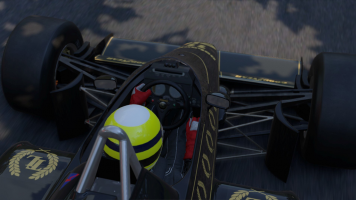As modern race cars use automatic clutches and paddles on the steering wheel to change gears, the clutch pedal is slowly being phased out from many sim racing rigs. Even less have an H-shifter, and as a result, racing with a manual transmission is becoming a lost art. Most who try initially struggle on downshifts - but there is a technique that makes them a bit easier if you are trying to learn "driving stick": Block shifting.
Going up through the gears is relatively easy, even with a manual transmission on board of your virtual race car: Simply press the clutch and let off the throttle, simultaneously move the gear lever, then release the clutch and get back on the throttle pedal. Just like that, the next gear is engaged. Of course, this needs a bit of practice regarding coordination and timing, but it is rather straight foward.
Once this technique does not cause you to slam straight into the closest wall because of coordination of movement needed, driving older race cars becomes a much more engaging activity. The good thing about this: Most racing vehicles from the days of manual transmission have rather long braking distances, and gearboxes usually only had four or five gears, giving racers enough time to downshift smoothly before corners.
While nowadays paddle-shift operated sequential gearboxes need to shift gears one after another, manual transmissions have no such constraint. This means that it is possible to go up or down multiple gears at once, which can come in very handy in situations like the one mentioned above.
Full Article
Going up through the gears is relatively easy, even with a manual transmission on board of your virtual race car: Simply press the clutch and let off the throttle, simultaneously move the gear lever, then release the clutch and get back on the throttle pedal. Just like that, the next gear is engaged. Of course, this needs a bit of practice regarding coordination and timing, but it is rather straight foward.
Two Feet for Three Pedals
It is not quite as easy the other way around, as downshifts take place in braking zones. Remember the two pedals you used for upshifts? Now you need to add the brake pedal to that - and with most of us only possessing two feet, improvising to operate all three pedals is a necessity. The technique to apply here is usually referred to as heel and toe, meaning you engage the clutch with your left foot while braking with your right (i.e. your toes), slightly pushing on the throttle when changing gears with your heel to match revs to the engine speed.Once this technique does not cause you to slam straight into the closest wall because of coordination of movement needed, driving older race cars becomes a much more engaging activity. The good thing about this: Most racing vehicles from the days of manual transmission have rather long braking distances, and gearboxes usually only had four or five gears, giving racers enough time to downshift smoothly before corners.
Frantic Braking Zones
Enter the late 1980s and early 1990s: As brakes became more efficient and gearboxes expanded to six and sometimes even seven gears, downshifts became much more frantic, especially in lightweight Formula cars. There is barely enough time to go down through the gears by the time you need to turn into the corner - unless you use block shifts.While nowadays paddle-shift operated sequential gearboxes need to shift gears one after another, manual transmissions have no such constraint. This means that it is possible to go up or down multiple gears at once, which can come in very handy in situations like the one mentioned above.
Continue reading
Half the Action, Double the TimeFull Article

